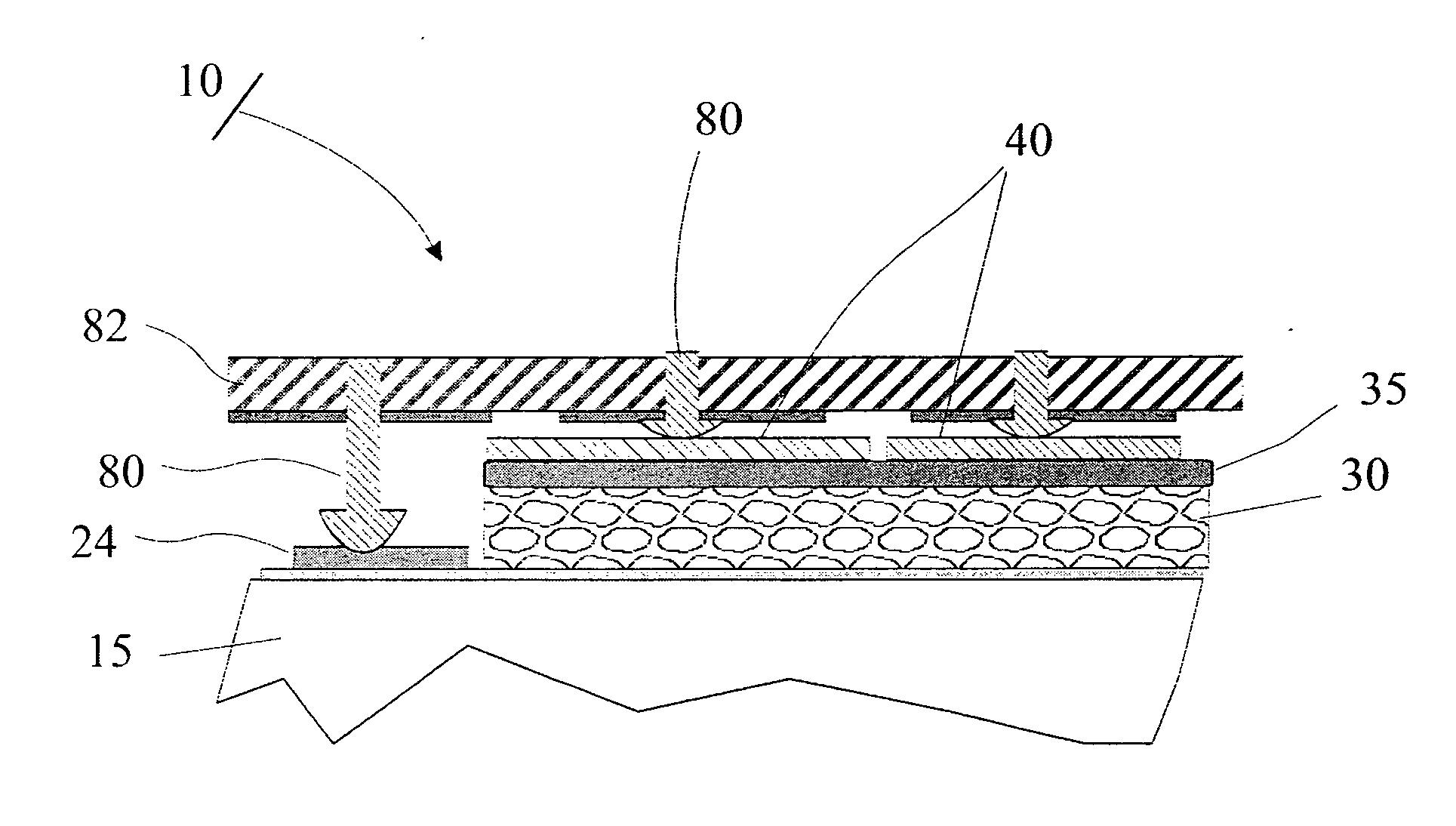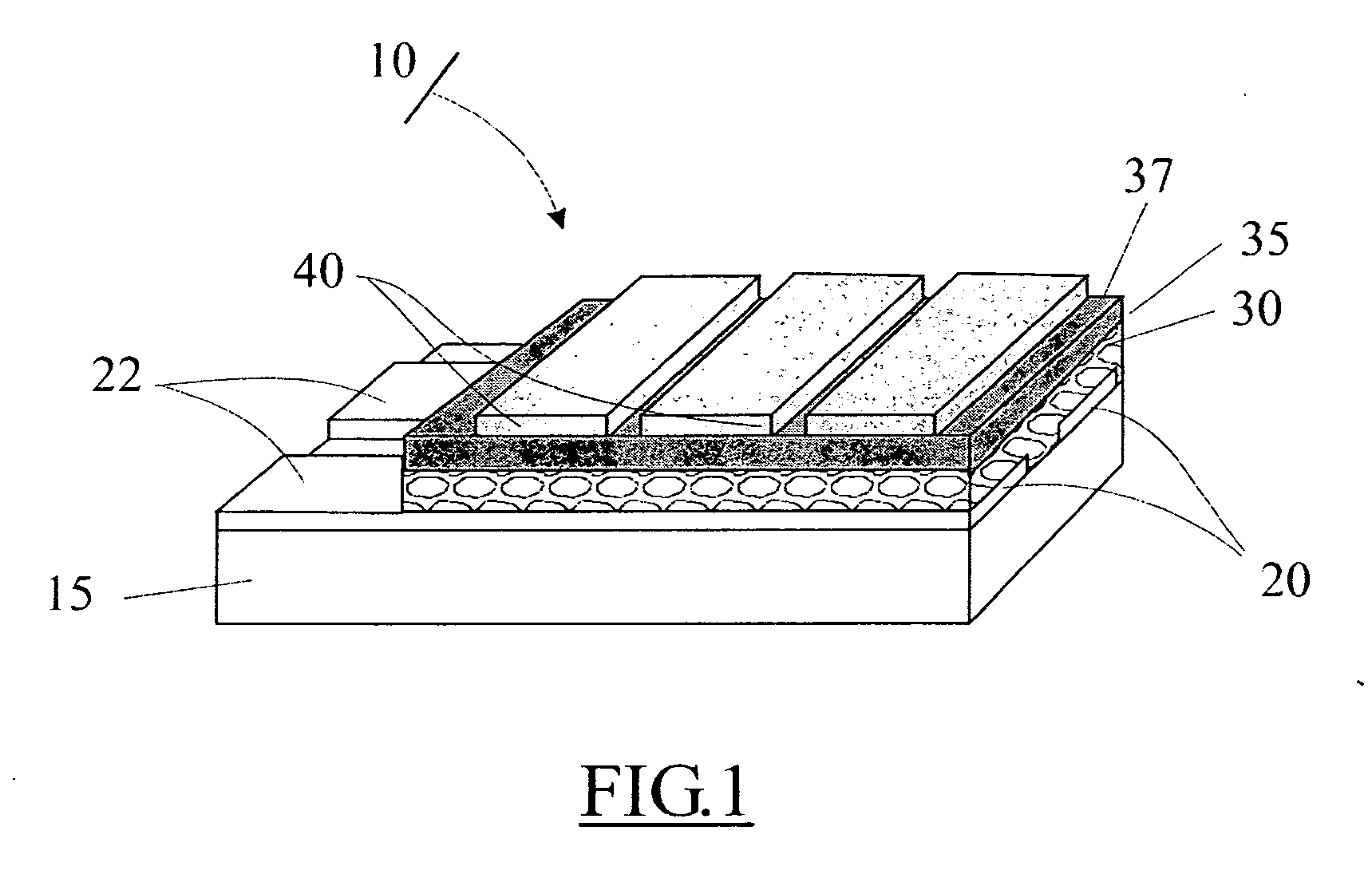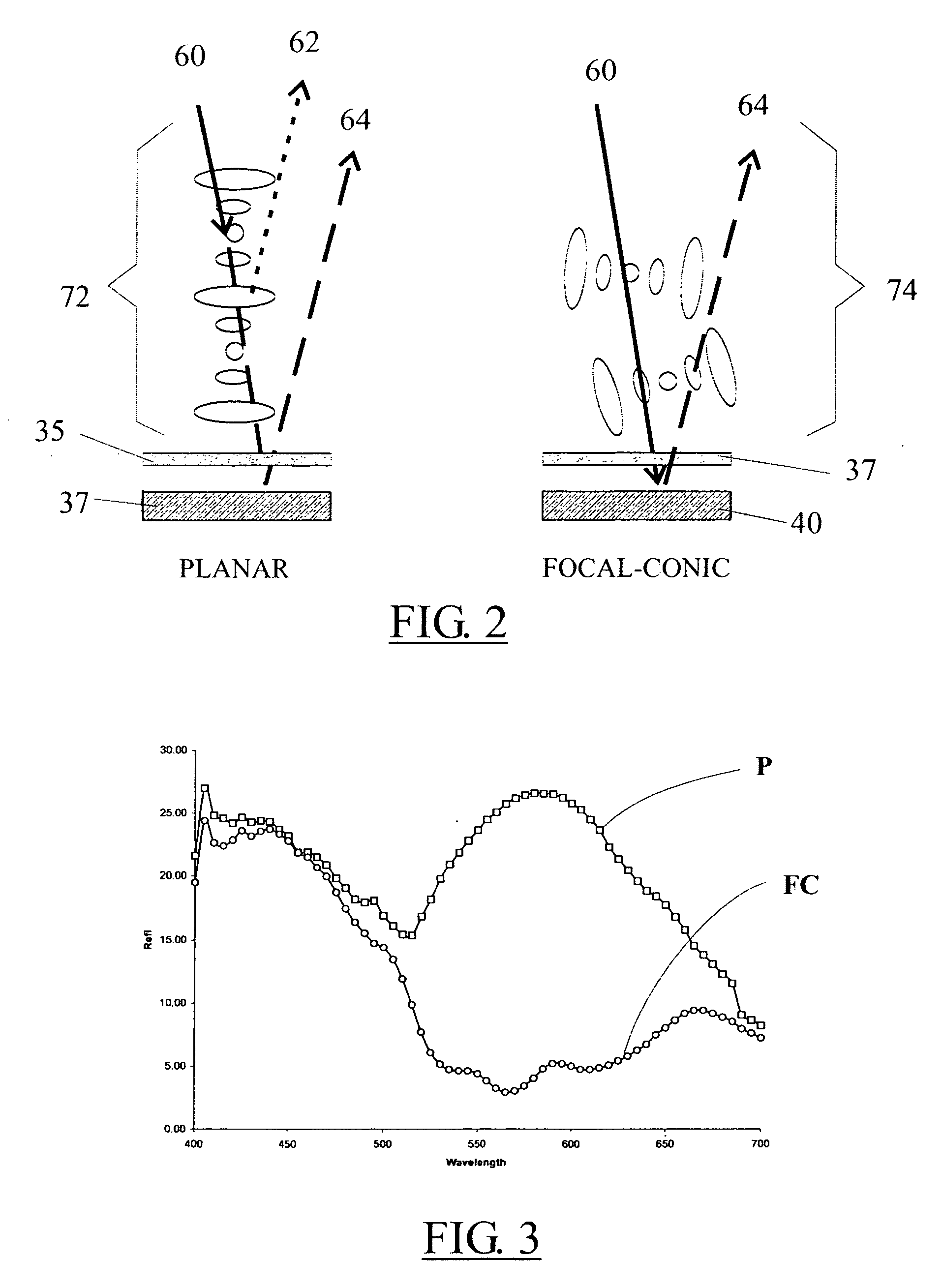Field blooming color filter layer for displays
a color filter layer and field-blooming technology, applied in the field of display sheets, can solve the problems of heavy and expensive electric display, and achieve the effect of little effect on drive voltag
- Summary
- Abstract
- Description
- Claims
- Application Information
AI Technical Summary
Benefits of technology
Problems solved by technology
Method used
Image
Examples
example 1
Comparative
[0052] An experiment was performed to determine the optical properties and electrical properties of a submicron indium-tin-oxide powder, 95 / 5 CITOH “C” from Umicore Indium Products, Providence, R.I. The material, hereafter known as ITO powder, was dispersed in water according to the following formula
5.00 gms.ITO powder50.00 gms. Deionized water0.10 gms.Surfynol 131 dispersing agent
[0053] The ITO powder was dispersed using 6 minutes of energy from a Branson Digital Sonifier, Model 450. Kodak deionized photographic gelatin was melted into the solution in the form of 5 grams of swollen gel, having a 40% dried gelatin content, hereafter known as “swollen gel”. Three drops of a surfactant, Zonyl FSO, was added to permit the mixture to be wet-coated in thin layers. The mixture was coated at 25 cc per meter over a plastic substrate. The dried film was highly conductive, having a conductivity of 50-200 ohms per square. The film was slightly translucent, but functionally transp...
example 2
Comparison
[0054] The invention requires a nonconductive layer, and a series of mixtures having progressively less ITO powder were made according to the processes in Example 1 until the following mixture proved to be nonconductive:
1.70 gms.Submicron Indium-Tin-Oxide powder;Umicore Indium Products 95 / 5 CITOH “C”50.00 gms. Deionized water0.10 gms.Surfynol 131 dispersing agent5.00 gms swollen gel
example 3
Comparative
[0055] A complementary dye solution appropriate for use with a yellow cholesteric layer to form a color-neutral display was created. Two pigments were used, Sunfast Blue 15:4 milled to a 110 nanometer mean diameter, hereafter known as Kodak cyan, and Pigment violet 29 milled to a 210 nanometer mean diameter, hereafter known as Kodak magenta. Both materials were suspended in water at a 12% concentration.
[0056] The following solution provided a non-field blooming color filter layer:
1.00 gms.Kodak cyan, 12% concentration2.00 gms Kodak magenta, 12% concentration2.80 gms Kodak gelatin, 40% concentration44.2 gms.Deionized water
The solution was coated over clear plastic at 10.76 grams per square meter and dried. The reflective density for the layer were: Red 2.63, Green 2.77, Blue 1.03.
PUM
| Property | Measurement | Unit |
|---|---|---|
| Length | aaaaa | aaaaa |
| Nanoscale particle size | aaaaa | aaaaa |
| Nanoscale particle size | aaaaa | aaaaa |
Abstract
Description
Claims
Application Information
 Login to View More
Login to View More - R&D
- Intellectual Property
- Life Sciences
- Materials
- Tech Scout
- Unparalleled Data Quality
- Higher Quality Content
- 60% Fewer Hallucinations
Browse by: Latest US Patents, China's latest patents, Technical Efficacy Thesaurus, Application Domain, Technology Topic, Popular Technical Reports.
© 2025 PatSnap. All rights reserved.Legal|Privacy policy|Modern Slavery Act Transparency Statement|Sitemap|About US| Contact US: help@patsnap.com



